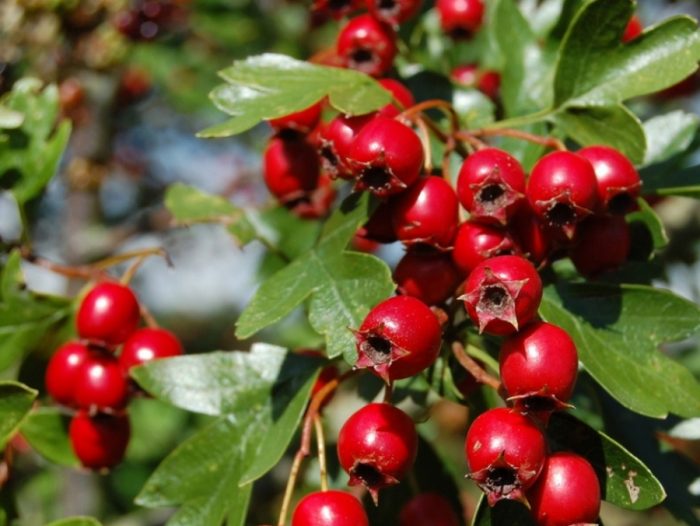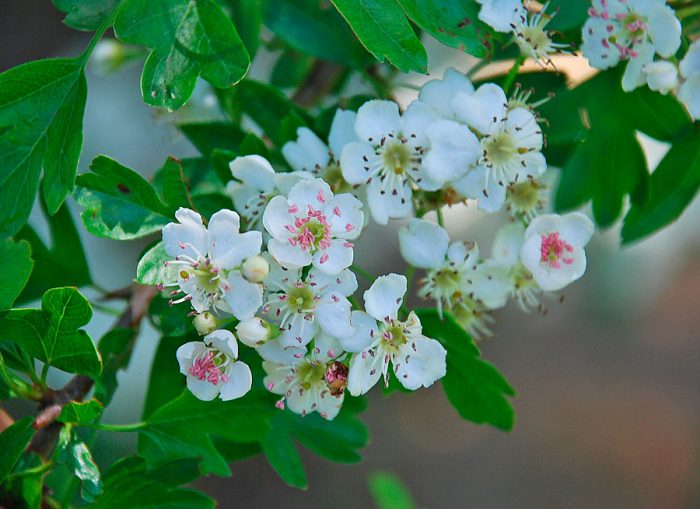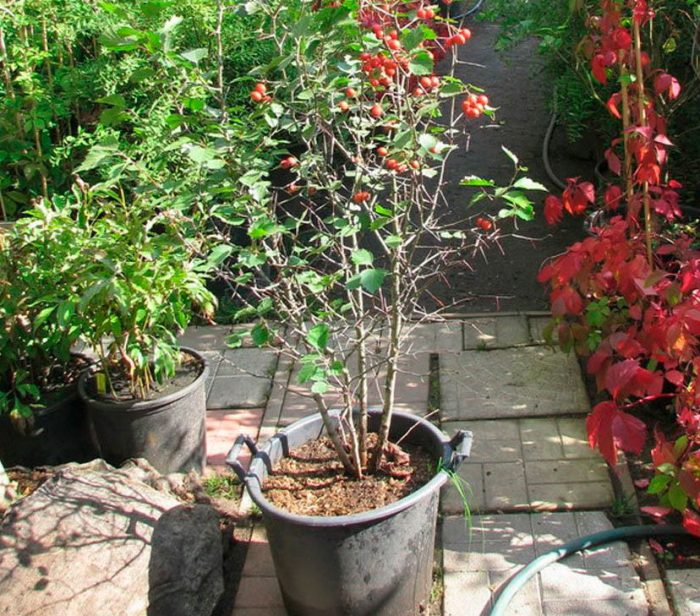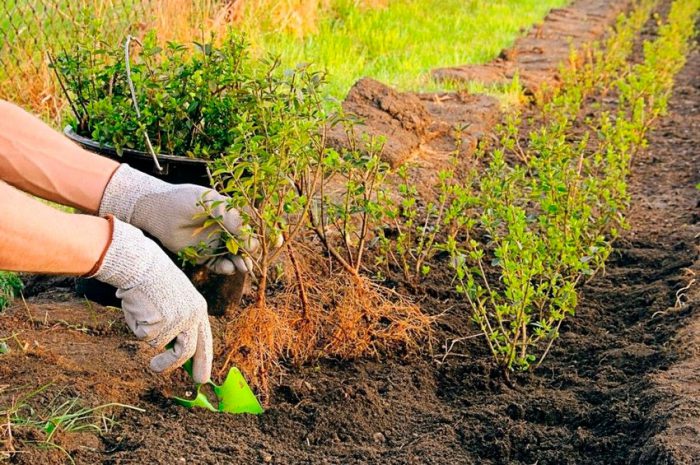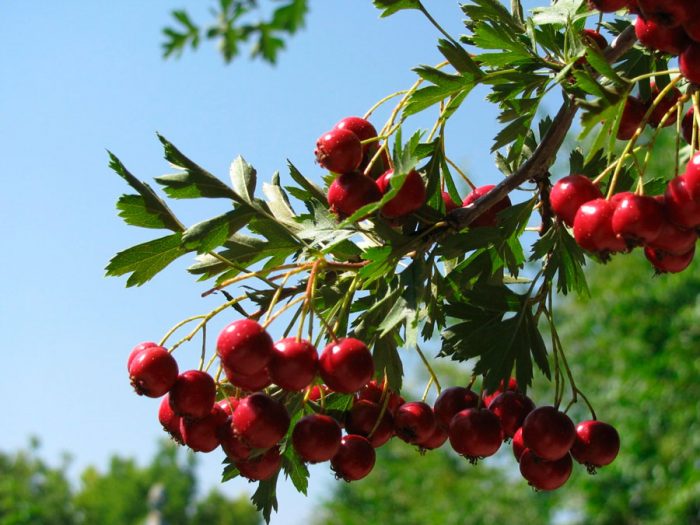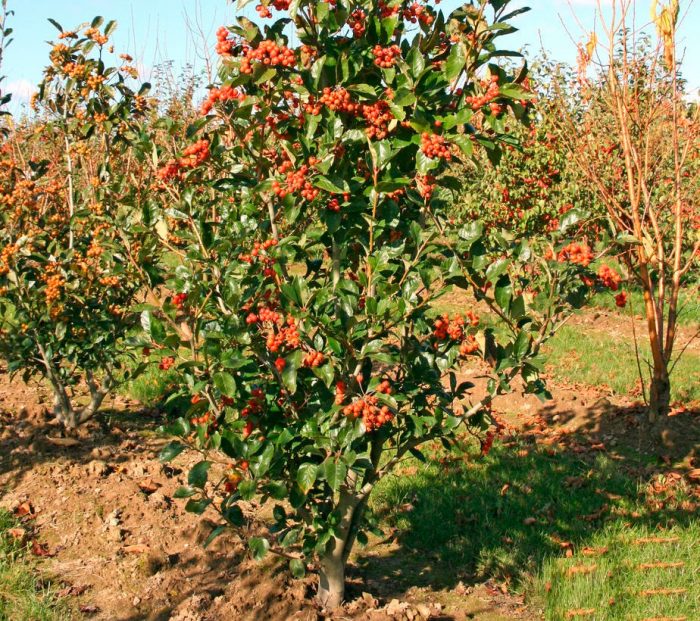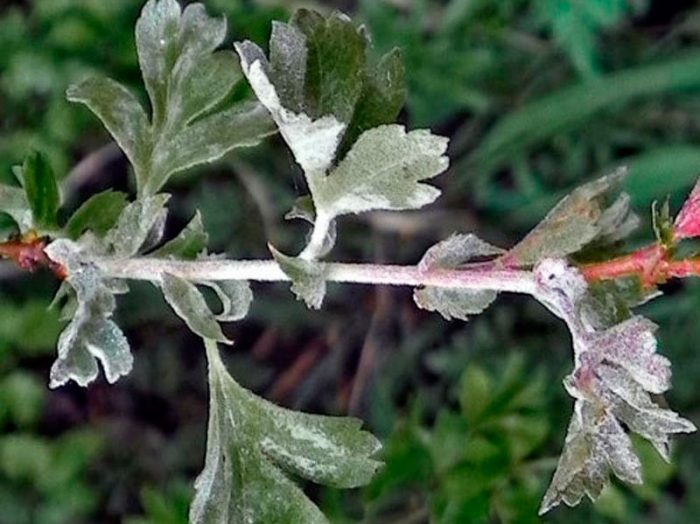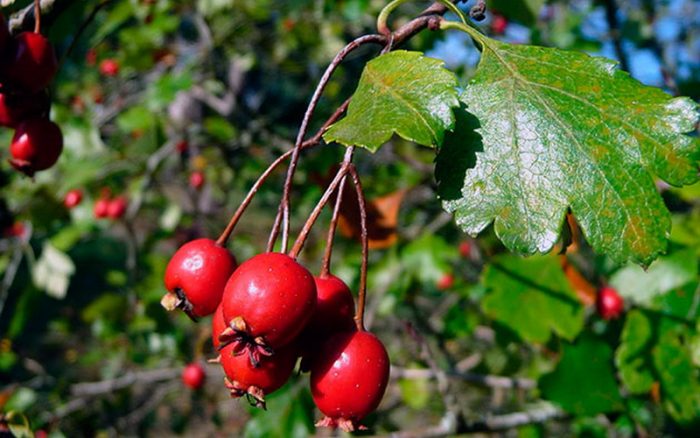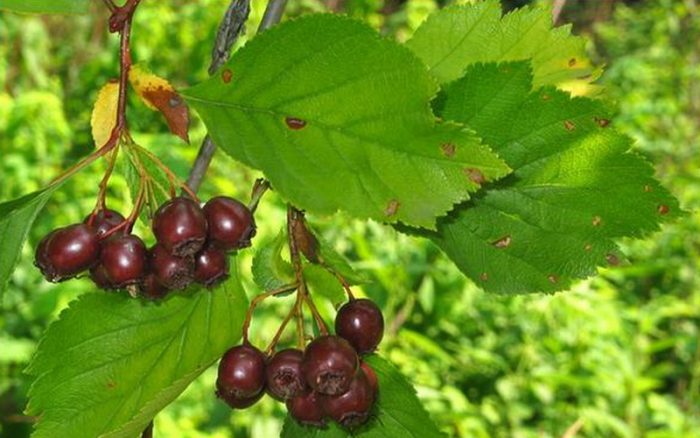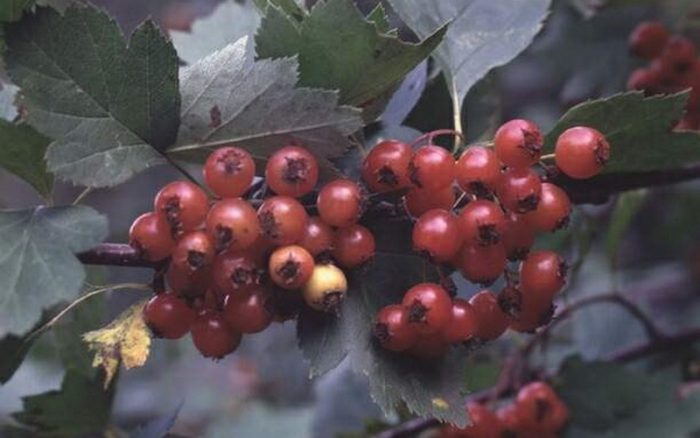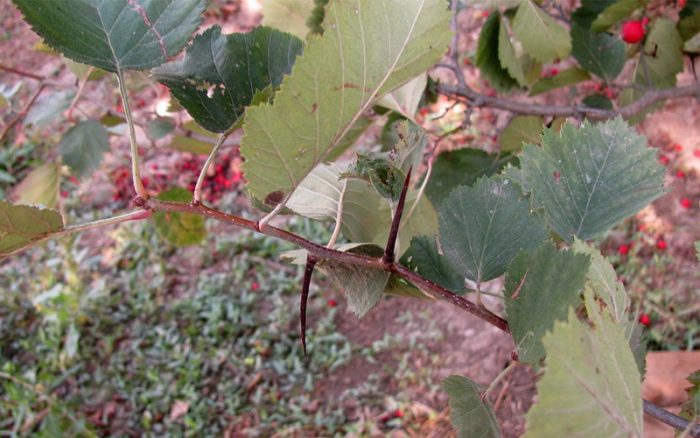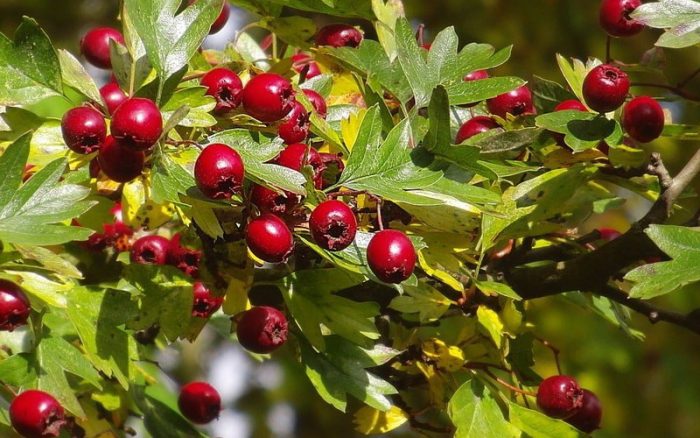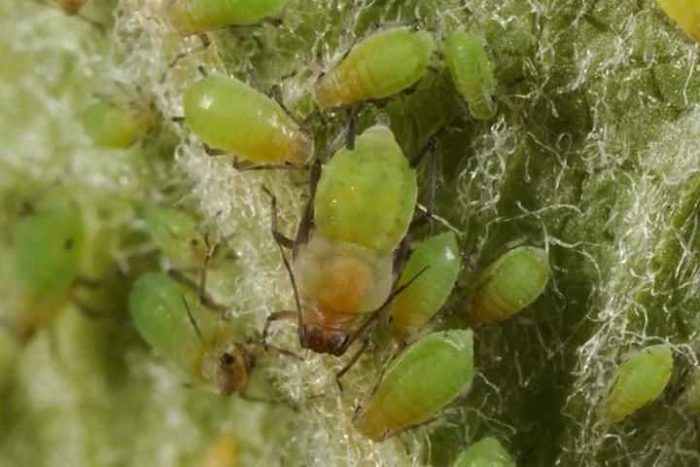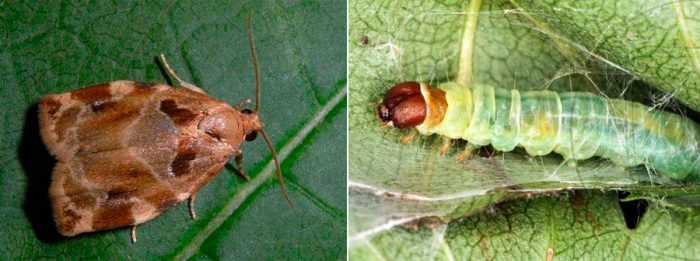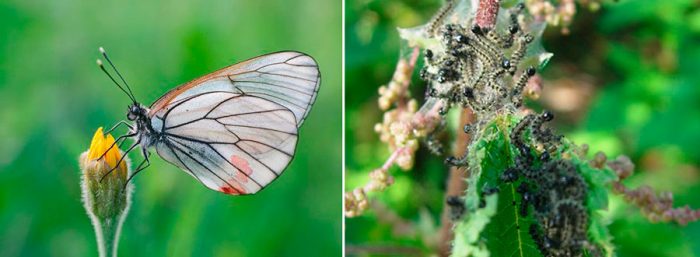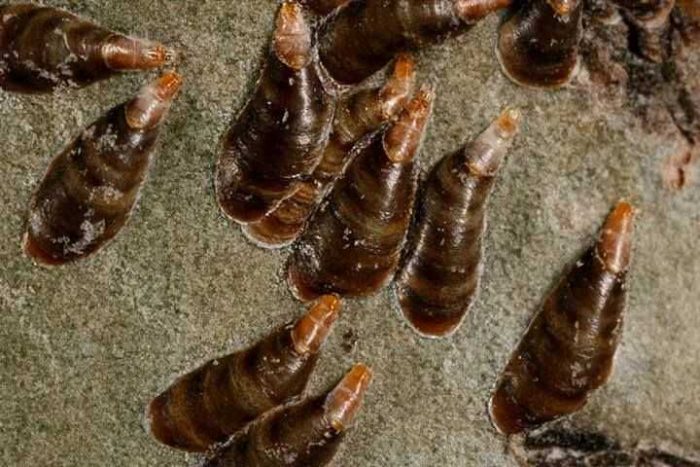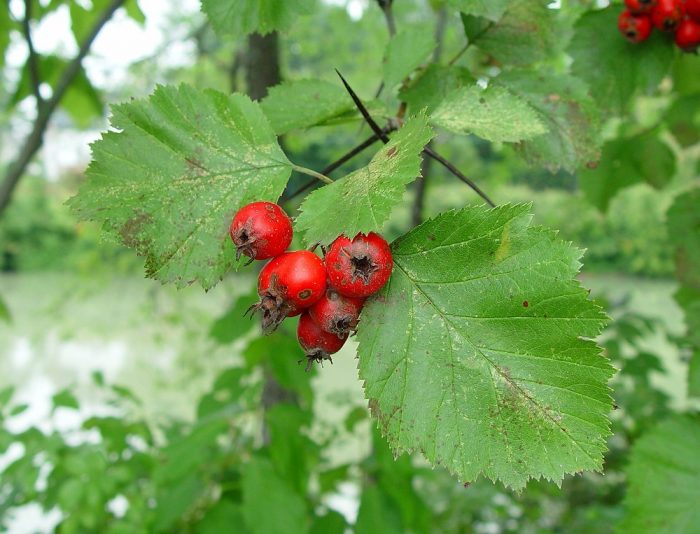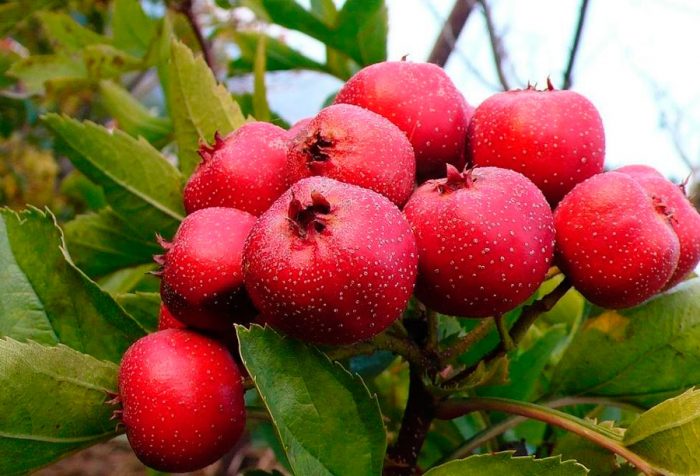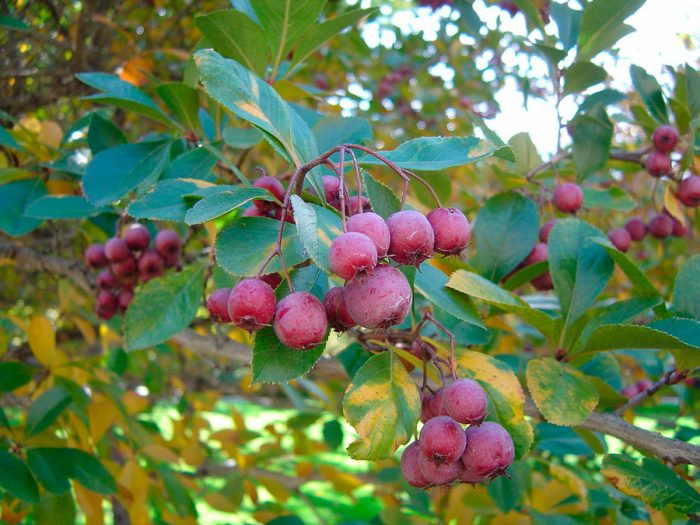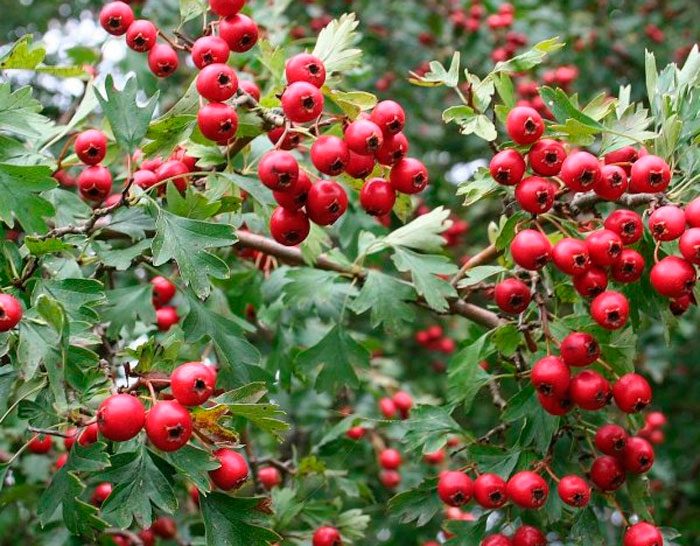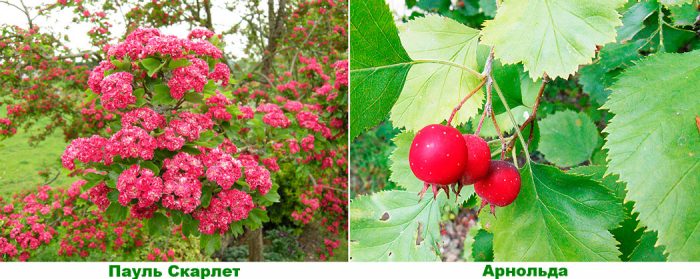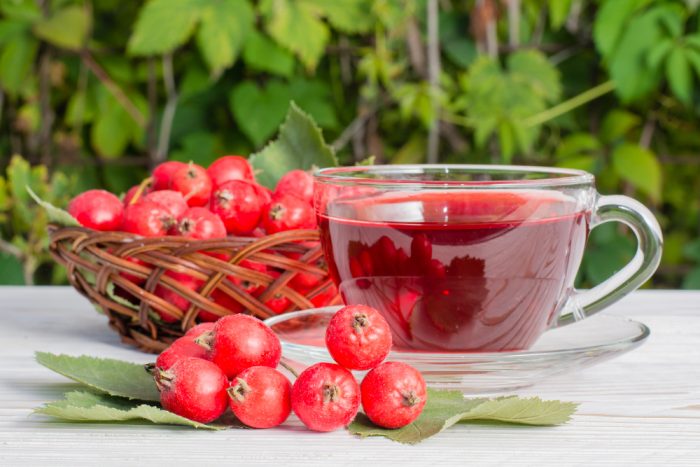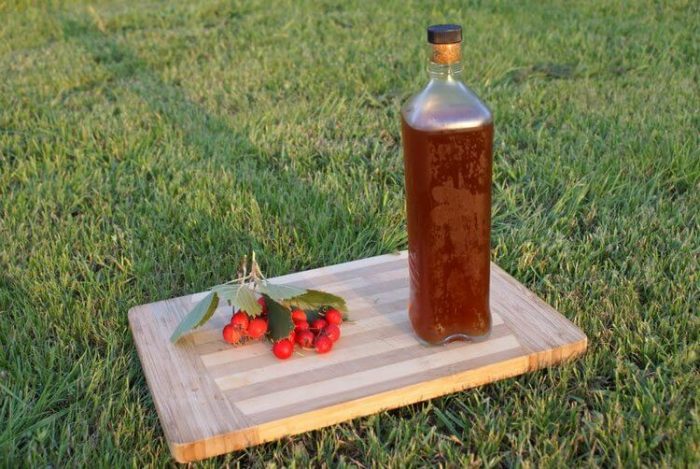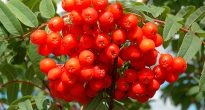Common hawthorn (Crataegus laevigata), also called smoothed hawthorn, or a lady-tree, or prickly hawthorn, or gnaw, is considered a representative of the genus Hawthorn of the Pink family. In natural conditions, it can be found in North America, as well as throughout Europe. This crop prefers to grow in deciduous and pine forests, on forest edges and on heavy clay soils. The name of the species in translation means "strong", this is due to the quality of the wood or the fact that the plant can live for about four hundred years. It is undemanding to care, and it is grown as a medicinal and ornamental plant.
Content
- 1 Hawthorn features
- 2 Planting hawthorn in open ground
- 3 Hawthorn garden care
- 4 Types and varieties of hawthorn with photos and names
- 4.1 Hawthorn pear (Crataegus phaenopyrum)
- 4.2 Hawthorn softish (Crataegus submollis), or semi-soft hawthorn
- 4.3 Pinnacle hawthorn (Crataegus pinnatifida)
- 4.4 Hawthorn spur (Crataegus crus-galli), or "cock's spur"
- 4.5 Green-meat hawthorn (Crataegus chlorosarca)
- 4.6 Common hawthorn (Crataegus monogyna)
- 4.7 Hawthorn prickly
- 5 Hawthorn properties: harm and benefit
Hawthorn features
Most hawthorn species are multi-stemmed deciduous trees. However, there are also semi-evergreen species. The height of such a tree varies from 3 to 5 meters. If optimal conditions for growth are created for him, then his height can even reach 12 meters. The dense rounded crown has a spherical or ovoid shape, it is often asymmetric. Ribbed or fissured bark can be brown or gray, and in some species it flakes off in small pieces. The branches are straight, weeping or zigzag. Young shoots have a red-purple color, they are naked or tomentose. Most species have leafless spines on the branches, the length of which varies from 0.5 to 10 centimeters, they develop from the axillary buds. In European and Asian species, thorns are either completely absent, or they are tiny. The shape of the leaf plates can be rhombic, ovoid, round or elliptical. The leaves are whole, pinnately incised or lobed, they are spirally arranged and have a serrated, serrated or dissected edge. In length, leaf plates reach 1–12 centimeters, are practically sessile or petiolate, and their surface is bare or covered with dense pubescence.In most species, in autumn, the foliage color changes to purple, orange or golden. However, there are types of hawthorn, in which leaf plates fly around green. Complex umbellate or corymbose inflorescences consist of flowers up to 10–20 mm in diameter, while they have only 5 petals, which can be colored pink, white or red. There are species with multi-flowered inflorescences, but there are also those in which the flowers are single or collected in 2 or 3 pieces in bouquets. The flowers contain a substance called dimethylamine, which is why they have the scent of rotten fish. Flowering begins in spring or the first weeks of summer. The fruits are pear-shaped, spherical or elongated apples, the size of which varies from 5 to 40 millimeters. Inside such apples, several pieces of rather large triangular seeds ripen. The type and variety of the tree affects the color of the apples, so it can be rich orange, almost black, red or yellowish orange. Fruit ripening is observed in September – October. By the age of 10, such a tree reaches its maximum fruiting.
Planting hawthorn in open ground
What time to plant
Hawthorn in the garden is used to create a hedge, which is considered impassable, and it is also planted with single trees in order to receive fruits. Saplings are planted in the spring as well as in the autumn. At the same time, experienced gardeners are advised to plant in the fall. For planting, choose a well-lit and open area. The soil should be well-drained, heavy and nutritious.
How to plant hawthorn
The choice of a suitable site, as well as the method of planting a hawthorn seedling, is influenced by what you are going to grow it for. To obtain a rich harvest, it is recommended to plant at least 2-3 bushes, while the distance between them should be about 200 cm, this will improve their pollination. The planting pit should be filled with a soil mixture specially prepared for this: sand, the upper nutrient layer of the soil, peat, humus are combined, and a very small amount of lime is carefully added.
When creating a hedge, the bushes should be planted in a common trench, the depth and width of which should be equal to 0.5 m. Between the seedlings placed in this trench, a distance of 0.5 m should be observed. Such a hedge should be made in a well-lit area, on which does not even have a slight shading, because hawthorns will not grow in cramped conditions with a lack of sunlight.
For planting, it is best to choose two-year-old seedlings. If 1 bush is planted, then for it the planting hole should be made with a width and also a depth of about 0.7 m.At its bottom, a drainage layer should be made of rubble, brick or gravel, while its thickness should be from 15 to 20 centimeters, on top it is covered with a five-centimeter thick layer of sand. The roots of the plant should be carefully straightened, after which it is placed in a prepared pit, which is filled with soil mixture (see above for composition). It should be noted that the root collar of the seedling should rise by 30-50 mm above the surface of the site. The planted plants need abundant watering. After the liquid is completely absorbed into the soil, the surface of the trunk circle should be covered with a layer of mulch (peat, compost or humus) five centimeters thick, while all the stems of the plant should be shortened to 10 centimeters.
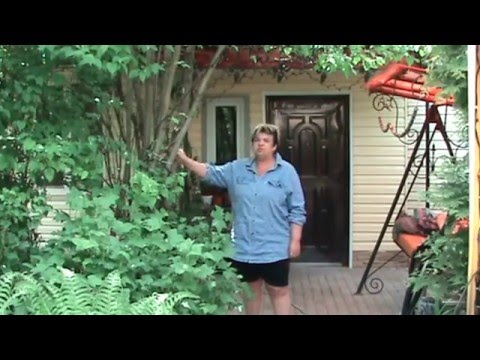

Watch this video on YouTube
Hawthorn garden care
You should take care of the hawthorn in the same way as for other garden crops.Such a tree should be watered, fed, weeded, loosened, cut off, and protected from pests and diseases as needed. It is necessary to systematically arrange an inspection of the tree in order to understand in what condition it is. Cut off any dead, competing, diseased, thickening stems and branches in time.
In order for the crown to have a certain shape, the tree will need formative pruning. This procedure, as well as sanitary pruning, is carried out in the spring. Most often, such a culture is grown in the form of a bush, for this, 5 to 6 skeletal branches should be left on the tree, while regular pruning should maintain their height at the level of 200-250 cm. For the first few years, the stems on hedge plants should be shortened by ½ part their annual growth, after the bushes reach a height of 0.5–0.7 m, it will only remain to be maintained at this level.
Watering should not be frequent. If it rains systematically in the summer, then watering should be done only once every 4 weeks, while 10 liters of water are consumed per 1 adult bush. If it is very hot in the summer, then the bushes should be watered more often. After the hawthorn is watered, the trunk circle should be loosened to a depth of 10 to 15 centimeters. In autumn, the tree must be dug around the perimeter of the crown to the depth of a shovel bayonet.
Throughout the growing season, this plant should be fed only 1 time before it blooms. It is recommended to feed the hawthorn with a mullein solution (1 part of the mullein is taken for 10 parts of water). This feeding will be enough for the tree for the entire growing season.
Transfer
Sometimes it becomes necessary to transplant an already adult hawthorn. In this case, a new planting pit is prepared in advance, and only then proceed to the direct transplant. It is recommended to transplant a tree before it turns five years old, because by this time a strong and sufficiently long root has already grown. Before proceeding with transplanting, a nutrient-rich soil mixture should be prepared for the tree. First, you need to dig a tree along the projection of the crown perimeter, while trying not to injure the root system. Then a lump of earth is pounded with a shovel, and the bush is tilted and removed from the soil. The hawthorn is transferred to a spread film or cloth, and then it is moved to a new pit. The roots that are bared should be treated with Kornevin's solution, then the plant is planted in a new place.
Diseases and pests of hawthorn with photo
Hawthorn needs protection from diseases and pests. It is threatened by the same harmful insects and diseases that harm the rest of the fruit crops: plum, apple, cherry plum, cherry, pear, apricot, peach, etc. Most often, the plant is sick with brown, gray, ocher, white and yellow spot, as well as powdery mildew. And the greatest danger of pests to the plant is represented by the green apple aphid, the comma-shaped apple shield, the rose leafworm and the hawthorn.
Powdery mildew
If the bush is infected with powdery mildew, then a gray felt or white cobweb bloom appears on its leaf plates and stems. Over time, it becomes dark and dries up, resulting in deformation of the stems and twisting of the leaf plates. Infected stems should be removed, and the bush should be sprayed with Vectra, Cumulus or Skor. After half a month, the fungicidal preparation is re-treated.
Ocher spot
With ocher spot in the middle of the summer period, specks appear on the leaves without a clear edging of ocher or brown color. From this, the foliage dries up and falls off prematurely.
Brown spot
With brown spotting, angular or rounded specks of brown color appear on the front surface of the foliage, which reach 0.6 cm in diameter and have a dark border. Where they are formed, the leaf begins to dry out.
Gray spot
Due to the gray spot on the foliage, a large number of gray, rounded spots with dark edging are formed. An intense period of illness is observed in the last summer weeks.
White spot
In the middle of the summer period, small brown spots of a rounded shape form on a tree affected by white spotting, over time their center turns white, while the color of the edges remains dark.
Yellow spot
With yellow spotting, large yellow spots form on the front surface of the foliage, after some time their color changes to brown-purple in a yellow edging. At the same time, fruiting bodies of fungi appear on the lower surface of the speck. Because of this, yellowing and flying around the foliage begins. To get rid of any of the types of spotting, hawthorn is sprayed with a 1% solution of copper oxychloride or Bordeaux liquid. In order to prevent the hawthorn, it is recommended to spray it in the spring before the buds swell, and in the fall, when leaf fall will be observed. In addition, in the autumn, it is necessary to remove loose leaves from the site, and all cut stems and branches must be burned.
Green apple aphid
The green apple aphid injures the young organs of the tree. It sucks the plant sap out of them, because of this, foliage collapses, and they also wither ahead of time, and the stems are deformed. In order to exterminate such a pest, the plant must be treated with a solution of Karbofos (for 1 bucket of water, 20 grams of substance). You can also use folk remedies such as tobacco or garlic infusion with soap. For preventive purposes, the hawthorn must be sprayed with Nitrafen before the foliage opens.
Rose leaf roll
The rose leafworm arranges egg-laying in the bark of the hawthorn, the grown caterpillars gnaw the buds of the tree, wrap up the foliage, and also gnaw the ovaries. To exterminate such a pest, the tree must be sprayed with a solution of Chlorophos (20 grams for 1 bucket of water). For preventive purposes, before sap flow begins, the tree should be treated with Nitrafen.
Hawthorn
The hawthorn is a butterfly that eats the nectar of the flowers of this plant, while on the front surface of the foliage it arranges egg-laying, and the caterpillars that appear will eat the foliage and buds. To exterminate the hawthorn, before flowering and at its end, the tree must be sprayed with a solution of Chlorophos or Karbofos (20 grams for 1 bucket of water).
Scale apple comma-shaped
The apple scutellum is a small sucking insect, it sucks the plant sap from the stems and foliage. To exterminate it, it is necessary to spray the tree with Karbofos, Fufanon, Aktara or Aktellik.
Types and varieties of hawthorn with photos and names
Of the large number of species of such a plant, the most popular is the prickly hawthorn. Below, those species that are most often cultivated by gardeners will be described.
Hawthorn pear (Crataegus phaenopyrum)
Unlike other species, this one has three-bladed leaf plates that are outwardly similar to the foliage of viburnum. In natural conditions, it is found in the Midwest of the United States. The height of such a plant is about 12 meters, the length of straight thorns is about 50 mm. Flowers are part of multi-flowered shields. Fruits, reaching 0.5–0.8 cm in diameter, are colored deep red. In the middle latitudes, this species is not cultivated, since it has a low frost resistance.
Hawthorn softish (Crataegus submollis), or semi-soft hawthorn
This is a typical representative of the North American flora. The height of this hawthorn is about 8 meters. The lush crown has the shape of a tent.The dark green leafy plates are ovoid and include 3 or 4 pairs of blades. At first, there is pubescence on the surface of the foliage, but over time it remains only along the veins. In autumn, the foliage turns brown-red. In diameter, large flowers reach 25 mm, they are on long thin pedicels. They are collected in ten to fifteen-flowered shields with tomentose pubescence. Red-orange fruits reach about 20 mm in diameter. Their yellow flesh is mealy and very tasty. During fruiting, such a tree is most decorative. Cultivated since 1830
Pinnacle hawthorn (Crataegus pinnatifida)
Often this species is called Chinese, since under natural conditions it is found in Primorye, Northeast China, Amur Region and Korea. This plant is distinguished by its moisture-loving, frost resistance, undemanding to the composition of the soil. The height of a strongly branched tree with a spreading crown is 4–6 meters. The color of the bark is dark gray, there are a few spines on it, reaching 20 mm in length. Small deep green glossy leaf blades are pinnately dissected. The deep red fruits reach 1.7 cm in diameter and have a spherical or pear-shaped shape. There are many small white warts on their surface. The plant retains its decorative effect throughout the season. Cultivated since 1860
Hawthorn spur (Crataegus crus-galli), or "cock's spur"
This species is native to the eastern part of the United States, while it prefers to grow along the edges, in river valleys, as well as on the slopes of mountains and valleys. The height of such a tree varies from 6 to 12 meters. The shape of the crown is broadly spreading. On the surface of the drooping branches, there are many slightly curved thorns, reaching 10 centimeters in length, outwardly they are similar to the spurs of a rooster. Whole leaf plates reach 8 to 10 centimeters in length, they are leathery, naked and have an elongated obovate shape with sharp teeth unevenly located along the edge. They are painted in a dark green color, which changes to a rich orange in autumn. Shield inflorescences consist of 15–20 flowers, reaching 20 mm in diameter and painted white. Fruit ripening is observed in the third decade of September. They do not fall off the tree throughout the entire winter period, and can be painted in a variety of color shades from dull red to green-whitish. This species is distinguished by its resistance to drought, and it also tolerates urban conditions well. However, its winter hardiness is not very high. Cultivated since 1656
Green-meat hawthorn (Crataegus chlorosarca)
In nature, this species is found in the forests of Sakhalin, Japan, Kamchatka and the Kuriles. It is a bush with a height of 4-6 meters. Old branches and trunk are covered with gray bark, and young stems are dark purple, spines are located on the surface, reaching 1.5 cm in length. Ovate lobed leaf plates have a sharp tip and a wide base. Their surface can be bare or pubescent, while on the seamy surface of the sheet, the pile is thick, and on the front - scattered. Dense corymbose inflorescences consist of white flowers that have dark anthers of the stamens. Ball-shaped fruits are painted black, and their tasty pulp has a green color, which is why this species is called green-meat. Cultivated since 1880
Common hawthorn (Crataegus monogyna)
Under natural conditions, this species can be found in the southern regions of the European part of Russia, in the Caucasus and in Central Asia. This species is very similar to prickly hawthorn, but it differs in that the flowers are painted in a light pink shade, as well as in rapid growth. The life span of this species ranges from 200 to 300 years.The height of such a plant is 3–6 meters, but if favorable conditions are provided for it, it can be higher. The symmetrical crown has a hip-shaped rounded shape. On the surface of the bare stems there are a few centimeter-long spines. The leaf plates are ovoid or rhombic in shape. The inflorescences contain from 10 to 18 flowers. There is only one bone inside the fetus. There are forms with double flowers of white and pink color. The most popular garden forms:
- pyramidal - the crown has the shape of a pyramid;
- weeping - the branches of the plant are lowered downward;
- crimson - single flowers are colored dark red;
- pink weeping - a bush with drooping branches and pink flowers;
- pink - there are white stripes on the surface of the pink petals;
- white terry - double flowers are white;
- always blooming - a very graceful bush blooms throughout the summer;
- split-leaved - pinnate leaf plates are deeply dissected;
- white and motley - the color of the leaf plates is variegated;
- thornless.
The variety Rosea Flore Pleno was obtained by hybridization, this plant has dark pink double flowers.
Hawthorn prickly
A detailed description of this species can be found at the beginning of the article. The most popular are the following decorative forms:
- Bicolor - white flowers have a red border;
- Pauli - Terry glossy flowers are painted in crimson red;
- golden and oaky - fruits of yellow color.
Also quite popular are such varieties as:
- Crawl scarlet... The height of such a decorative variety is from 3 to 4 meters. The crown is wide and asymmetrical. Terry flowers have a carmine color. The front surface of three to five-lobed leaf plates is dark green, and the back is of a paler color. The brown-red fruits are slightly silver and have an ovoid or spherical shape.
- Arnold... This large-fruited variety has thick articulated stems covered with a rough light gray bark. The leaf plates are rounded, and the spines reach 90 mm in length. Shields are composed of white flowers. Inside the fruit, there are 3 or 4 seeds, and their taste is sweet and sour.
In addition to these species, such as: Altai, Crimean, scarlet, fan-shaped, Daurian, Douglas, blood-red, or Siberian, round-leaved, green-fruited, five-pistillate, large-anthered, or large-prickled, Maksimovich, Pontic, Poyarkova, riverine hawthorn are also cultivated:
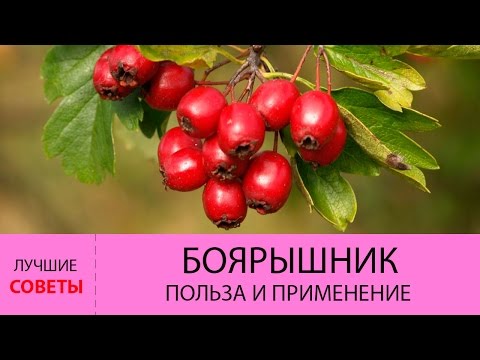

Watch this video on YouTube
Hawthorn properties: harm and benefit
Useful properties of hawthorn
Hawthorn has been used in medicine since the beginning of the 16th century as an astringent, and it helped with intestinal disorders. Tea with foliage and flowers of this plant began to be used from the 19th century to purify the blood. From the beginning of the 20th, both flowers and fruits of this culture began to be used for cardiovascular diseases.
However, it must be remembered that different types of hawthorn differ in healing power. Medicinal properties are strongly expressed in such species as: blood-red hawthorn, common, daurian, green-fruited, five-pistil and monopathic hawthorn. In the manufacture of medicinal products, the fruits and flowers of this plant are used. The fruits contain sugars, and most of all they contain fructose, in this regard, they can be eaten even by people with diabetes. The fruits also contain various biologically active substances: triterpene, and also tartaric, caffeic, chlorgenic and citric acids, acetylcholine, choline, quercetin, tannins, phytosterols, fatty oil, sorbitol and vitamins A, P and C.
The use of hawthorn has a positive effect on the work of the heart, while both the fruits and the products made on their basis do not have unwanted side effects. Hawthorn is recommended for the elderly for prophylaxis, as it helps to strengthen the heart, prevent changes in the coronary vessels, and also leads to accelerated blood flow, stabilization and normalization of blood pressure, relieving irritability, fatigue and anxiety.
The most famous remedy made on the basis of this plant is tincture. There are 2 ways to cook it yourself:
- 100-150 grams of dried fruit must be thoroughly crushed with a wooden mortar. The resulting mass is poured into a glass dish into which a liter of vodka (alcohol) is poured. The tightly sealed vessel is removed in a cool and dark place, where it should be for 21 days. The tincture is filtered through cheesecloth.
- 100 grams of freshly picked flowers must be placed in a glass vessel, into which a liter of vodka or alcohol is poured. A tightly sealed vessel is removed in a dark and cool place for 1.5 weeks. Strain the tincture.
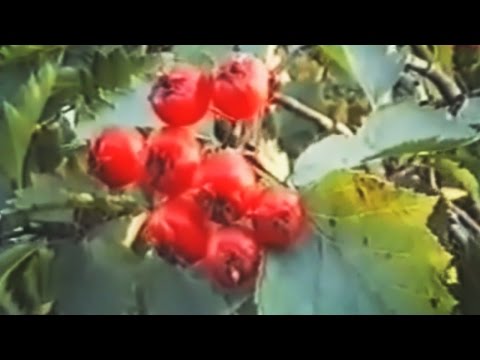

Watch this video on YouTube
Contraindications
Hawthorn should not be used during pregnancy, breastfeeding women, and hypotonic patients. It is also contraindicated in case of individual intolerance. If you can use hawthorn, then you should remember that even a very useful remedy can be harmful if abused.

